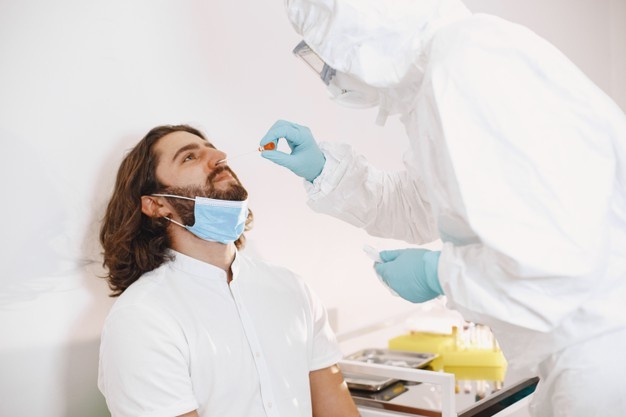‘Coronavirus swab test’ is a set of words we hear every day. The pandemic spread has resulted in the need for increased test facilities and quick results. How do these tests work? Do they actually work? Can my infection go undetected? Here are the answers.
The Test
The coronavirus test begins by extracting sputum from a person’s nose and throat. A nasopharyngeal swab is inserted through the nostrils or the mouth, reaching to the back of the throat to collect the fluid sample. This sample/sputum is tested to detect the presence of the coronavirus or any other infection. RT-PCR procedure works by detecting the presence of genetic material of SARS-COV-2 (novel coronavirus).
This virus is made up of RNA. This needs to be converted into DNA to be detected. An enzyme called ‘Polymerase’ is used in ‘Reverse Transcription’ to convert the sample into DNA. Hence the name RT-PCR, standing for Reverse Transcription Polymerase Chain Reaction. ‘Chain Reaction’ is the method through which the DNA is copied exponentially to detect the virus. A DNA binding fluorescent dye called ‘probe’ detects the presence of the virus after multiple cycles of amplification.
False Negatives
How does the test show negative when a patient has symptoms, and oxygen level is going down? A false negative is diagnostic parlance when a person actually has a disease. Still, the diagnostic test for the same fails to detect it. Common reasons for the error are inaccurate technology, clinical negligence, and others. If the sample is transported under inappropriate conditions, it can give false results. If the infection is not in the place that was swabbed, it can give negative results. Nasal swabs can only detect the infection if it is present in the upper respiratory area. However, in some cases, the presence of the coronavirus cannot be detected from this area alone. Real-time RT PCR tests cannot detect if you have had COVID in the past. It can only detect an ongoing infection.
A false-negative result can also happen if one has a very low viral load.
A viral load represents the amount of the virus in any given testing sample, such as the nasopharyngeal swab. Some people may have a low viral load in the first few days of being infected. It will be low at the end of the course of infection as well. A test conducted at these points might show a false negative even though the virus is present in the body.
There are several risks to a patient in case of a false negative result. They include delayed or lack of supportive treatment, patient monitoring, and eventual failure in contact tracing. This increases the risk of spreading the infection, posing a threat to people around the patient.
False Positives – False positives can create panic and result in the administration of unnecessary treatment. How does the result show positive when a person does not have an infection? Cross-contamination of samples, unclean lab workspace, insufficient instrument disinfection, and others can lead to false-positive results.
What can be done about it? Testing is important. Do not procrastinate testing once you start to show symptoms. Seek medical help. Go for a mandatory 14-days quarantine if you have symptoms, even if the tests came back negative. Above all, follow government regulations, maintain social distancing, wear masks and sanitize. Let there be no errors in precaution.

